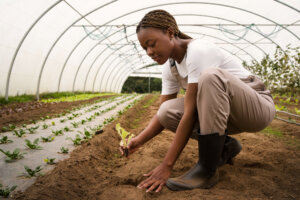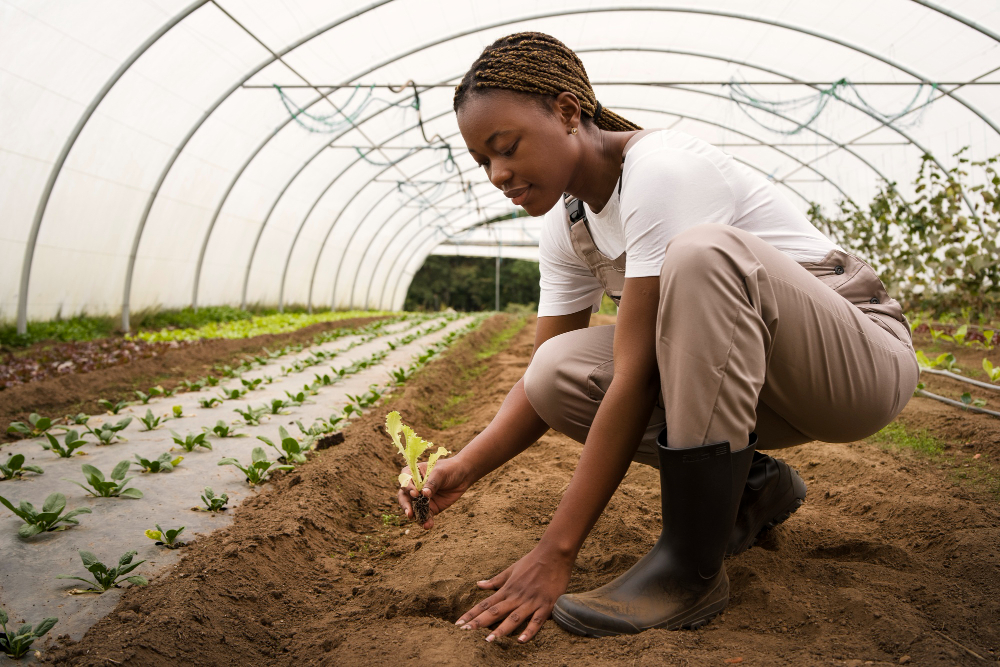Farming in Kenya has been on the decline in recent years. This is due to several factors, such as the high cost of inputs, the effects of climate change, and a lack of access to markets. As a result, many farmers are struggling to make a profit.
However, there are several ways in which farmers can make their farming more profitable. These include diversifying their crops, practicing organic farming, and involving themselves in agribusiness.
This article provides a farmers’ guide on how to make your farming more profitable in Kenya. It has information on the state of agriculture in Kenya, challenges to profitable farming, and the best farming strategies to adopt for profitability.
State of Agriculture in Kenya Now
The drought has adversely affected farmers making it nearly impossible to produce substantial crops in the last five consecutive seasons.
Agriculture contributes significantly to the Gross Domestic Product (GDP) of Kenya. The sector also employs about 65% of Kenyans.
According to the Kenya National Bureau of Statistics (KNBS), agriculture has faced a significant decline in the past few years, contributing only contributed 19.9% of the GDP. This is a decline of 2.2% compared to 2020.
The sector is also a source of employment for many Kenyans in rural Kenya, employing about 65% of the population.

A decline in output has been experienced in grain (maize), tea, vegetables, and milk production. In 2021 maize production fell by 5.4 million bags while tea production fell by 5.6%.
Many farmers in the agricultural industry are small to medium-sized. They typically own between 0.2 and 3 ha of land. Small-scale farming produces about 75% of the total market food needs.
Farming in Kenya mainly depends on seasonal rainfall classified into the long rains (March to May) and the Short rains (October to December). Over the last few years, the rain has been insufficient and this led to low yields.
Farmers face several challenges such as droughts, and lack of farm inputs among others that make farming harder and less profitable.
Challenges making farming in Kenya less profitable
Climate change
Most farmers depend on rainfall for farming. Due to the rapidly changing climate patterns, there are prolonged droughts and inadequate rains leading to low crop yields. Livestock productivity is also affected.
Amid the shocks of climate change farmers have helplessly watched their crops dry up and shrivel to nothing while livestock perish.

Rising Cost of farm inputs
The cost of farm inputs such as seeds and fertilizers has been on the rise.
The cost of fertilizers such as CAN (Calcium Ammonium Nitrate) used for top dressing had shot up to retail at more than Kes 4000. DAP (Diammonium Phosphate) used during planting, retailed at about Kes 6000.
The high costs have led to an intervention by the government to reduce the price of fertilizers.
There have also been moves to acquire high-yield and drought-resistant crops. The government recently removed the ban on genetically modified crops.
Poor access to Finance & Credit
Access to capital has a significant impact on farmers’ decisions to invest and produce more. If the available finances do not meet the farmers’ current needs, they may be discouraged from adopting better farming methods.
Access to credit could improve farmers’ ability to produce more. Financial institutions shy away from providing credit to farmers due to the high risk associated with farming.
In Kenya, the agricultural industry receives about 10% of the total credit given out by financial institutions, including the government. Small-scale farmers receive only a third of that amount.
However, with only 3.2% of Kenyan farmers using formal borrowing channels such as banks, there is more to be done. Other finance and lending institutions can step in and help farmers.
Farmers can access financing by getting secured loans such as logbook loans from institutions like Ngao Credit.

click here to check our loans
Post-harvest losses
Post-harvest losses are the loss of food along the supply chain. That is any losses from harvesting the crops to delivery to consumers.
According to the United Nations Food and Agricultural Organization (FAO), post-harvest losses for cereals, dairy, and fish can total up to 20%, 30%, and 40%, respectively.
Horticultural losses in Kenya can reach 50%, primarily as a result of careless handling and storing procedures. From harvest to consumption there is a loss of close to one-third of a season’s harvest.
To deal with post-harvest losses, the Ministry of Agriculture launched the Warehouse Receipt Sytem (WSR) in July 2020.
Access to markets
Many farmers face significant challenges when trying to reach markets to sell their products. One of the challenges is poor infrastructure and high transport costs.
Additionally, the market is highly fragmented, with brokers taking control of pricing and denying farmers direct access to the customers and favorable prices.

Disease and pests
Kenya’s food stability is in danger due to pests and diseases. The Agrochemicals Association of Kenya is concerned about how invasive pests and new diseases are destroying farm products.
Pests such as leaf miners, fruit flies, red spider mites, and larger glam borer are ravaging crops and forest cover. Common diseases affecting cereals include stem rust, Brown leaf rust, and gleam bloch.
Strategies To Make Your farming More Profitable
If you are a Kenyan farmer, there are some things you can do to make your farming more profitable. Here are some of the most effective strategies for doing so.
- Identify profitable crops
Conduct research on crops that have a high demand in the market and focus on growing them.
Even though some crops may have high demand, they may need a lot of inputs like water, pesticides, and fertilizers.
The demand for some crops may be lower, but they may require fewer inputs, which means higher profits. Find out which crops will be the most profitable for your farm by researching crop demand, input costs, and potential yield.

This will ensure that you get a good price for your product and make a profit.
- Embrace modern farming techniques
Use modern farming techniques such as drip irrigation, greenhouse farming, and the use of quality seeds and fertilizers. This will help you increase your yield and reduce costs.
- Proper farm management
Ensure that you keep records of all your farm activities, including expenses and income. This will help you to identify areas where you can cut costs and increase revenue.
- Value addition
Consider value addition to your produce. This could include processing, packaging, and branding your products. This will help you to sell your products at a higher price and increase your profit margins.
- Use appropriate farming techniques
Farming techniques such as proper land preparation, planting at the right time, using appropriate planting densities, and using appropriate irrigation techniques can help increase crop yields and quality, resulting in higher profits.
You can also seek advice from agricultural extension officers, other farmers, or agricultural organizations to learn about appropriate farming techniques for your specific crop and location.

- Seek knowledge
Attend agricultural training programs and workshops to learn about new farming techniques, market trends, and emerging technologies. This will help you to stay up-to-date with industry trends and make informed decisions.
- Establish partnerships and participate in cooperatives
Look for partnerships with other farmers, suppliers, and buyers. This will help you to reduce costs, increase your market reach, and get better prices for your produce.
Participating in farmer groups and cooperatives can help you access information, training, and resources that can help you improve your farming practices and access markets.
Cooperatives can also help you negotiate better prices for your crops, reducing marketing costs and increasing profits.
- Take advantage of technology
Use technology such as online platforms and mobile applications to connect with potential buyers and access market information. This will help you to identify market trends, price your products competitively and increase your revenue.

- Selling to local businesses
Selling to nearby grocery stores and community markets can lower a farmer’s product transportation costs and boost profit margin. Farmers who supply local markets and grocery stores with produce don’t have to travel to make deliveries.
- Improve soil fertility
Soil fertility is essential for crop growth and yield. Improving soil fertility through practices such as adding organic matter such as manure, using cover crops, and crop rotation can lead to higher yields and better quality crops, resulting in higher profits.
- Pest management
Pests and diseases can drastically lower crop yields and quality, which lowers crop yield and quality profits.
Crop rotation, the use of resistant varieties, and the use of natural predators are examples of integrated pest management techniques that can help control pests and diseases while minimizing the use of pesticides, resulting in lower input costs and higher profits.
- Diversify your income streams
Having multiple sources of revenue can help to lessen the risks involved in farming. Think about raising animals, growing a variety of crops, or adding value to your crops by turning them into jam, juice, or dried fruit goods.
You can increase your profits by diversifying your sources of income and using them to take advantage of various market opportunities.
Conclusion
Farming is an essential industry in Kenya, providing food, income, and employment opportunities for many people.
The agricultural sector has the potential to contribute immensely to the economic growth of the country and alleviate people from poverty. The lack of access to finance is a stumbling block that should be reviewed.
Thankfully there are other options for obtaining finances using your assets like vehicles to get a logbook loan to finance your agriculture business.
Are you in need of financing for your farming? Click here to know more
By following these tips, you can make your farming profitable in Kenya. However, it is important to remember that farming is a long-term investment, and success requires patience, hard work, and dedication.


